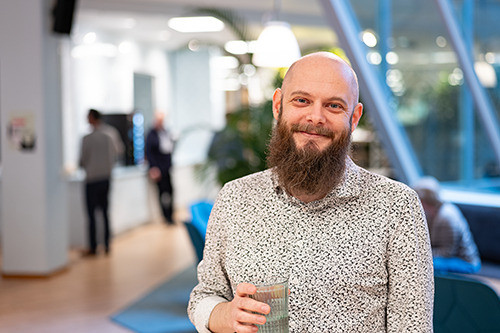What might a typical workday look like?
– A typical day may include contacts with project manager – perhaps they have budget issues related to their innovation project. In addition, quite a lot of time is spent on assessment processes when we receive project applications. This involves both gathering external evaluator and reading and assessing applications ourselves.
Other fun activities could include workshops for sharing experiences between project or discussions about how we are taking steps forward in the agency's internal AI strategy. It could also involve more practical tasks such as creating and testing ideas using the Python programming language.
Vinnova has a learning culture, how would you say you notice that?
– Already in the first week, I was met with an openness and curiosity towards colleagues' different perspectives and experiences. This has persisted and there is the opportunity to participate and contribute in different contexts. I think it is a good foundation for a learning culture.
As someone who has previous experience from companies in the start-up and scale-up phases, I also feel that the authority is relatively flexible and can adapt working methods and routines as needed.
In what ways do you feel that Vinnova is a modern public authority?
– The fact that we work according to the principle of “digital first” feels modern, not least for a public authority. This means, among other things, that we are used to hybrid work and digital meetings. We do not handle any documents in paper form, at least I have not seen any since I started at Vinnova.
How are you involved in contributing to the next technological leap?
– I contribute in many different ways and at several different levels. It can involve helping actors find suitable calls for proposals and collaboration partners. But it can also involve contributing to workshops and discussions linked to Vinnova's government assignment.
One example is when I, together with some colleagues, managed to get more funding for a call for proposals that attracted many qualitative project applications. These funds are not always that large in a corporate context, but can be crucial for an innovation to take that important step forward.


